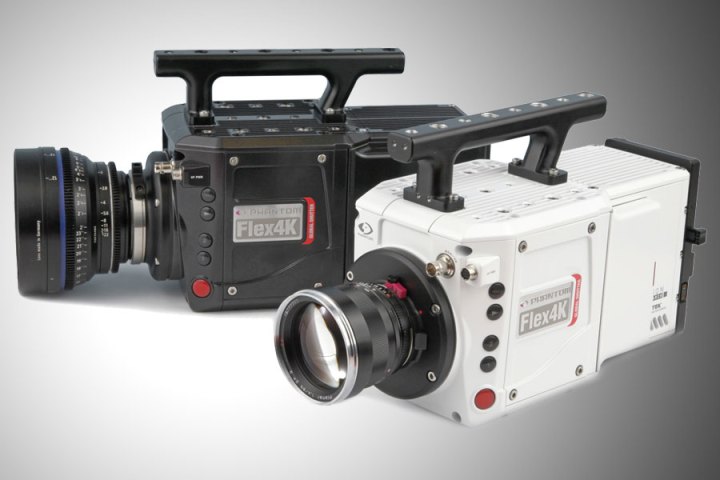
In a standard CMOS sensor, pixels are exposed and processed one line at a time, commonly called a “rolling” shutter. This means each row of pixels is capturing a different moment in time from the row above and/or below it.
For shots without much motion in the frame, the effect is unnoticeable. But when shooting fast-moving subjects (or, alternately, when the camera itself is moving quickly), this can cause a real problem. In the filmmaking world, the resulting skew and wobble of the image is colloquially known as “jello cam.” In science and research applications, it’s simply called unacceptable.
A global shutter, by contrast, exposes every pixel at exactly the same moment and is much better for accurately capturing motion. By introducing a global shutter version of the Flex4K, Vision Research is packaging the best high-speed cinema camera tech in a product that meets the exacting demands of scientists and engineers. The company sees it as being particularly useful in aerospace and defense, where the camera can record spinning propellers and other rotating motors without causing motion artifacts.
A global shutter often comes with one drawback, however: decreased dynamic range. Dynamic range refers to a camera’s ability to capture detail from shadows to highlights, and depending on the situation, achieving the maximum dynamic range may be more or less important than getting accurate motion capture. As such, The Flex4K-GS will allow users to toggle between global and rolling shutter modes.
“There have always been trade-offs between speed, sensitivity, and resolution in modern CMOS-based cameras, but Vision Research is changing the game with the new Flex4K-GS,” said Product Manager Toni Lucatorto in a statement. “The camera brings pixel resolution to the forefront, allowing for incredibly fine detail and improved visibility of phenomena and measurements.”
Like the standard Flex4K, the GS model can shoot 4K resolution at up to 1,000 FPS, or 2K up to 1,975 FPS. It can record uncompressed RAW video or shoot directly to Apple ProRes, a popular format for users who want to maintain a high-quality file that can be more easily stored, ingested, and edited. The camera body has also been redesigned with isolated electronics and can endure temperatures as low as -4 and as high as 122 degrees Fahrenheit.




